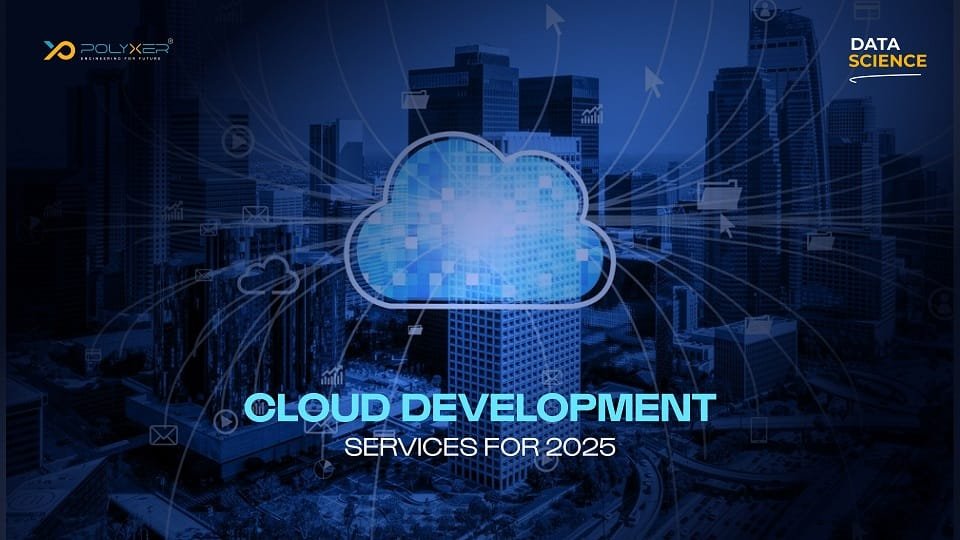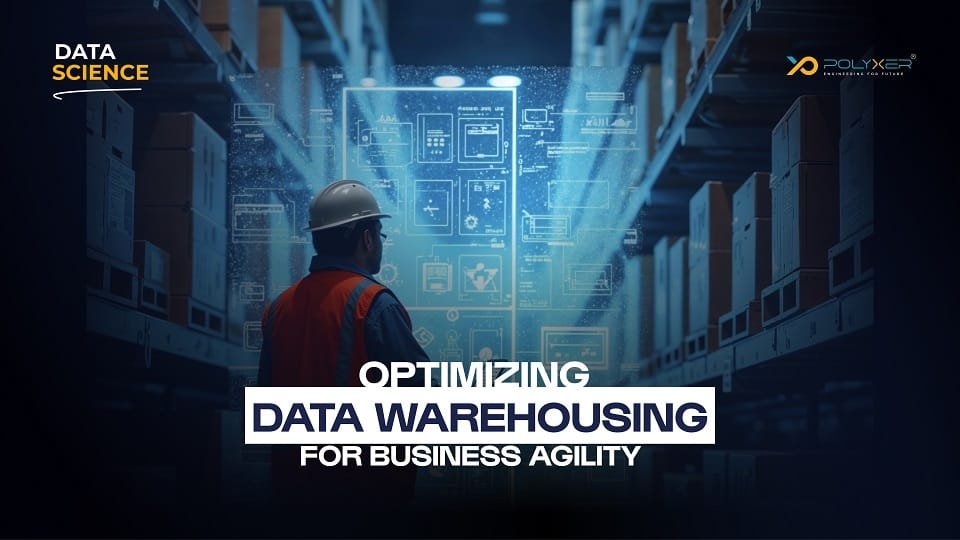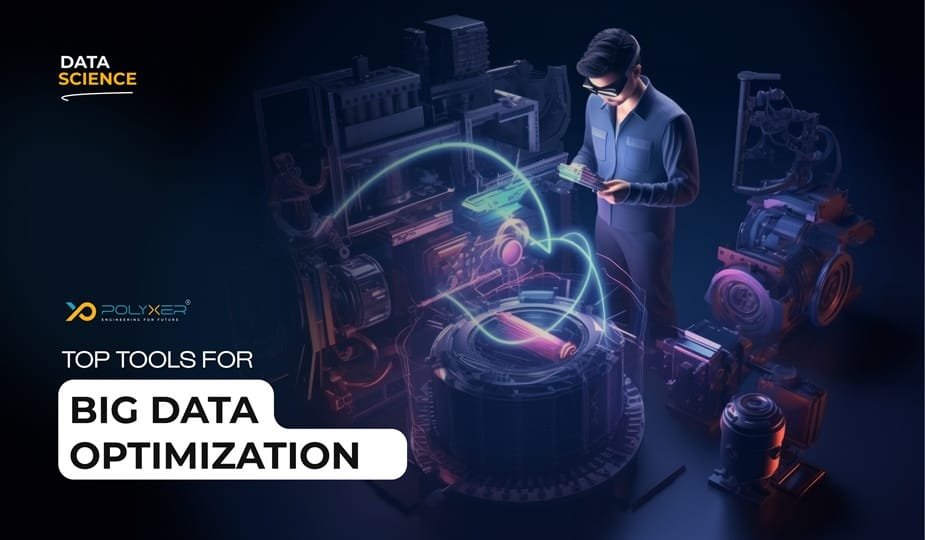
Complete Guide to Implement Data Warehouse Projects

The Intersection of Data and Cybersecurity
With 2025, the scenario of cloud development services will continue to develop, progress in technology, increasing demands of scalability and constantly growing requirement for data safety. Cloud computing has become the cornerstone of modern business operations from a fundamental IT infrastructure, which enables organizations to innovate globally, streamline and enhance streamlined processes. According to Precedence Research, the size of the global cloud computing market is USD 912.77 billion in 2025 and, by 2025 to 2034, representing CAGR of 21.20%, it is expected to reach USD 5,150.92 billion by 2034.
Moving forward, we will explore the anticipated trends, technologies and solutions that shape the cloud development services in 2025, which provides information about how businesses can leverage these progresses to achieve their goals.
Evolution of Cloud Development Services
Brief Overview of Cloud Computing
Cloud computing refers to the distribution of computing services on the Internet, including storage, processing power, and app hosting. By using cloud services, organizations can prevent the complexities of infrastructure management, which allows them to focus on innovation and development.
Growth and Adoption Trends
Adoption of cloud services has seen an exponential growth in the last decade. Along with businesses identifying the benefits of cloud solutions - like cost efficiency, scalability and flexibility - Cloud Services Market is estimated to reach more than $ 800 billion by 2025 by 2025. Organizations ranging from startups to large enterprises are rapidly migrating their applications and data to be competitive on the cloud.
Key Trends Shaping Cloud Development Services in 2025
As we look at 2025, many major trends will shape the landscape of Cloud Development Services:

Key Trends Shaping Cloud Development Services in 2025
1. Edge Computing
Understanding Edge Computing: Edge computing brings computational sources closer to data sources for computation, which enables rapid processing speed and low delay by demonstrating data processing on the edge of the network.
Impact on Cloud Development: As IoT devices are prolonged, demand for edge computing solutions will increase. Organizations will rapidly combine cloud capabilities with edge computing to support real-time analytics, leading to increased performance for applications such as autonomous vehicles, smart cities and industrial automation.
2. Serverless Architecture
What is Serverless Architecture? Serverless computing developers allow the creation and running of applications without worrying about the underlying infrastructure. With server-free architecture, cloud providers automatically manage the allocation of resources and scales applications based on demand.
The Shift to Serverless: In 2025, server-free architecture will become mainstream as developers want to improve efficiency and reduce operating overheads. This paradigm will enable teams to focus on writing code rather than server management, intensifying the development cycle and rapidly able to the market for applications.
3. Multi-Cloud and Hybrid Environments
Adoption of Multi-Cloud Strategies: Companies will rapidly adopt multi-cloud strategies to avoid sellers locking-in and leverage the strength of many cloud providers. Organizations will be able to select the best breed services from different providers, according to their specific requirements.
Hybrid Cloud Solutions: Organizations will implement hybrid cloud solutions to balance the workload between on-premise infrastructure and public cloud services. This flexible approach allows businesses to keep sensitive data on-radiuses using scalability of public clouds for low-sensitive charge.
4. Artificial Intelligence and Machine Learning Integration
Enhancing Cloud Services with AI/ML: Artificial Intelligence and Machine Learning Technologies will be integral to Cloud Development Services. In 2025, the integration of cloud provider AI and ML will offer enhanced capabilities to facilitate integration in applications, making organizations capable of using advanced analytics and automation.
Automated Decision-Making: Leveraging AI-managed insight allow businesses to make data-driven decisions and improve operational efficiency. From predictive analytics to intelligent automation, organizations will use AI/Ml to optimize their cloud-based applications for improved performance and user experiences.
5. Enhanced Security Measures
The Growing Importance of Security: Since cyber threats are rapidly refined, cloud security will be the top priority. Organizations will demand stronger safety measures from cloud providers, including the ability to detect encryption, identification management and danger.
Zero Trust Architecture: Adopting zero-trust security models will lead to speed in the cloud environment. Assuming that the danger may exist in and out of the network, the business will implement strict access control and continuous monitoring, which will increase the safety currency of their cloud system.
Cloud Development Solutions for 2025

Cloud Development Solutions for 2025
1. Platform as a Service (PaaS)
What is PaaS?: PaaS provides developers with a platform to develop, run and manage applications without the complications of building and maintaining the underlying infrastructure.
Future Developments: In 2025, PAAS solutions will develop to offer even more flexibility and scalability. Enhanced Development tools, integrated machine learning capabilities, and built-in DevOps will allow developers to focus on quick deployment of coding, testing, and applications.
2. Infrastructure as a Service (IaaS)
Understanding IaaS: IaaS offers virtualized computing resources on the Internet, allowing organizations to rent server and to do on-demand storage. This eliminates the need for heavy investment in physical hardware.
Innovations in IaaS: With 2025, the IAAS solution will integrate artificial intelligence for dynamic scaling, allowing the infrastructure to automatically adjust the user's demand. Increased automation will streamline the resource provision, improve efficiency and reduce costs.
3. Cloud-native Development
Defining Cloud-native Development: Cloud-native development refers to the manufacture and deployment of optimized applications for the cloud environment. This approach allows organizations to leverage complete capabilities of the cloud, including scalability, flexibility and flexibility.
Future Opportunities: As the cloud-native ecosystem expands, the organization will adopt microservices architecture, containerization, and continuous integration/continuous deployment (CI/CD) practices to accelerate development and improve application performance.
4. Cloud Migration Services
The Need for Migration: As organizations transfer their operations to clouds, cloud migration services have become necessary. These services help businesses in transferring their applications, data and processes to cloud environment, reducing disruption.
Enhanced Migration Strategies: From 2025, Cloud Migration Solutions will use AI-driven devices to assess the existing infrastructure, determine the optimal migration paths and automate the transfer process, smoothing the adoption of clouds for all sizes.
5. DevOps and Agile Practices
Integrating DevOps with Cloud Development: DevOps emphasize cooperation between growth and operating teams, increasing software delivery speed and reliability. As organizations embrace cloud services, DevOps would be more efficient workflows than integration of principles.
Future Trends: In 2025, the organizations will further include agile practices in cloud development, allowing constant improvement through aged and collaborative teams and automatic test pipelines.
Benefits of Embracing Cloud Development Services

Benefits of Embracing Cloud Development Services
⦁ Cost Efficiency: Cloud Development Services eliminate the need for adequate upfront infrastructure investment, allowing organizations to only pay for resources that they consume. This pay-as-you-go model enables better cost management.
⦁ Scalability: Cloud solutions provide organizations with flexibility to go up or bottom based on demand, ensure that they use only the necessary resources only at any time.
⦁ Business Agility: Cloud development intensifies time-to-market by enabling rapid growth cycles and agile methods. Organizations may quickly respond to changing market conditions and customers' demands.
⦁ Improved Collaboration: Cloud services facilitate distance cooperation, enabling distributed teams to work together. This is preferably important in today's remote and global workforce.
⦁ Access to Advanced Technologies: Cloud providers continuously invest in innovation, providing access to state-of-the-art technologies such as AI, machine learning and Big Data Analytics without the complexity of on-premise implementation.
Challenges to Consider in Cloud Development

Challenges to Consider in Cloud Development
1. Data Security and Compliance
Since organizations migrate data on clouds, concerns about data security and compliance are crucial. Organizations must ensure that the data stored in the cloud follows the rules of the industry (eg, GDPR, HIPAA) and implements strong security measures to protect sensitive information.
2. Vendor Lock-In
Organizations may risk depending on a single cloud provider, limit their flexibility and increase costs. Developing a multi-cloud strategy can reduce this risk by leveraging the best services from different providers based on specific requirements.
3. Skill Gaps
With the rapid development of cloud technologies, organizations may face challenges in making efficient personnel efficient in new equipment, languages and practices. Continuous training and development programs will be necessary to bridge these intervals.
4. Integration Complexities
Integrating cloud solutions with the existing on-premise systems can withstand challenges, especially in complex IT environment. Organizations should develop a clear integration strategy to ensure uninterrupted data flow and application communication.
5. Performance and Downtime Challenges
While cloud services provide scalability and reliability, organizations should be cautious about performance issues and potential downtimes. Developing contingency plans and regular performance assessment can help reduce these concerns.
The Ending Note
With 2025, the landscape of Cloud Development Services will continue to develop, which is characterized by the convergence of automation, artificial intelligence and advanced data analytics. Organizations should embrace these trends to remain competitive, to run innovation, streamline procedures and increase cloud technologies to enhance customer experiences.
Understanding the benefits and challenges of cloud development services will empower businesses to effectively navigate the complications of this change. By investing in skill development, adopting multi-cloud strategies, and preference to safety and compliance, organizations can use the full potential of cloud-based solutions.
Ultimately, the future of Cloud Development Services seems cloud services are going to redefine, and those who embrace these changes will sometimes pave the way for success in the digital scenario that is developed. By tapping in the capabilities provided by cloud technologies, businesses can put themselves in a position in innovation and development in the coming years.
This Article is also here






